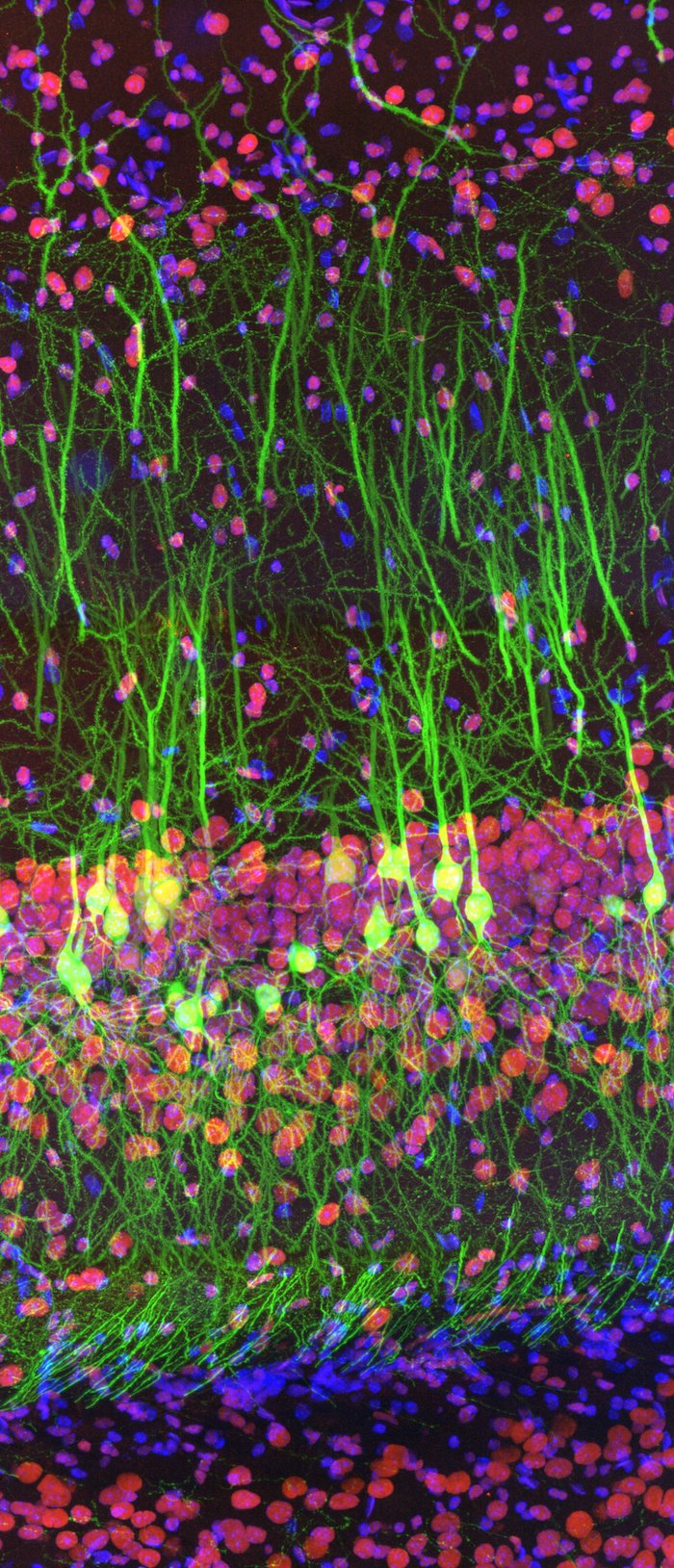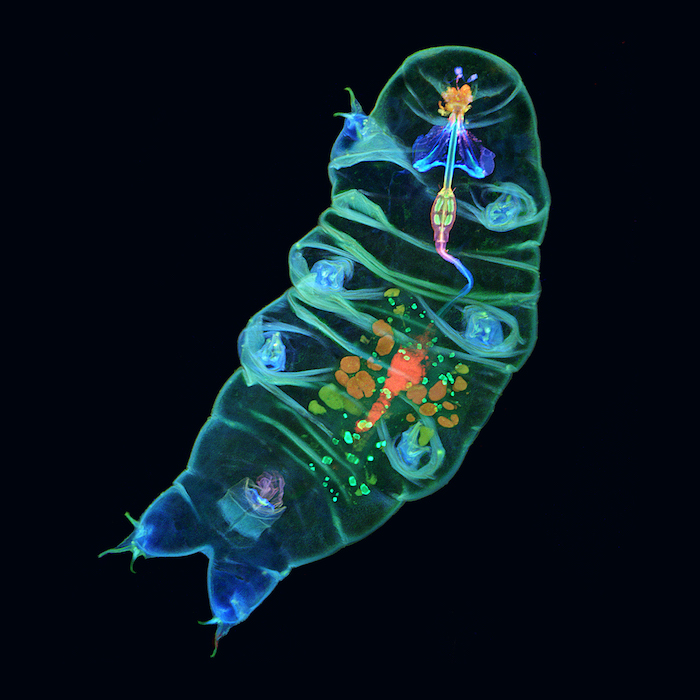Tardigrades. They're weird, wonderful, nearly indestructible, and we love them. They're also super tiny, making it difficult to get to really know these ultimate survivors (even when they're making cameos in huge Marvel action movies).
That's why we really dig events like the Olympus Image of the Year. This contest gathers entries from around the world in a very specific field: light microscopy. It's like the annual Wildlife Photographer of the Year contest, but all the images have been captured by microscopes!
These images are cutting edge science, going deep into microscopic worlds. At the top of this post is an image of a tardigrade made by University of Maryland scientist Tagide deCarvalho. Using fluorescent dye, he was able to display with beautiful detail the guts of a creature that is barely a millimetre long. Incredible!
What to see more? Get ready for a very looooooong image below...
Glowing bears and mouse brains?

The neurons in this mouse brain — stained green — are the highways through which information travels. We have similar ones in our own brains! (Ainara Pintor/Olympus Image of the Year)
Isn't that cool? While the water bear took the top prize for the Americas, the global top prize was this stunning slice of life: a literal slice of a mouse's brain.
Spanish researcher Ainara Pintor created this image by using fluorescent dyes to stain the neurons (green), cell nuclei (blue), and proteins (red) of this mammal's brain. Neurons are the network through which information travels in the brain. The mouse's brain has 70 million of them — ours have about 86 billion of them!
Go back up and have another look at that amazing network.
Worlds within

Just winging it! (Hamed Rajabi/Olympus Image of the Year)
If you'd prefer to look at an image that feels a little more recognizable, this honourable mention winner from Hamed Rajabi of Germany fits this bill. It's of a highly magnified section of insect wings. See how the veins of the wings are covered in tiny thorns, like the stem of a rose.
What do they do? We're not sure either, but it's fun to guess what their purpose is! These images bring a hidden universe to life, showing us the worlds that exist in a drop of water. And we're grateful that we don't have to be as small as a tardigrade to see them!
 This incredible image shows the internal organs of a tardigrade — an animal that measures only a millimetre in length. (Tagide deCarvalho/Olympus Image of the Year)
This incredible image shows the internal organs of a tardigrade — an animal that measures only a millimetre in length. (Tagide deCarvalho/Olympus Image of the Year)










cool
😀 😀 😀 cool